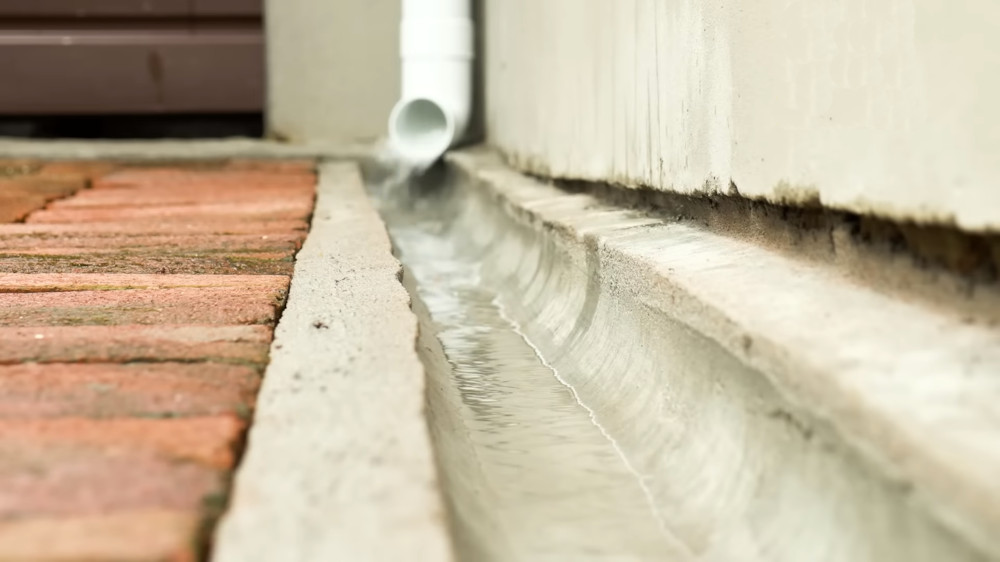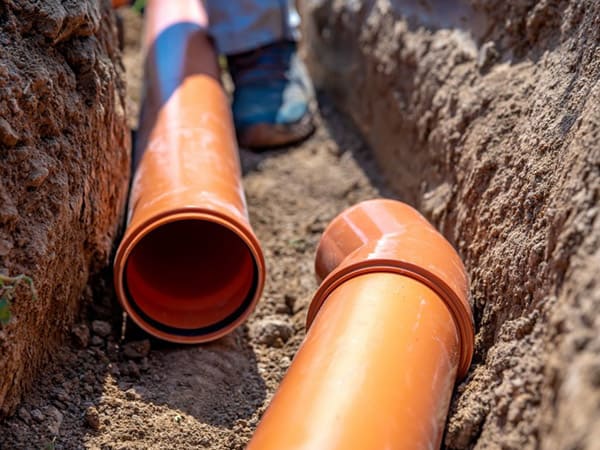In New Zealand, where rain can be heavy and unpredictable, effective drainage is vital for homeowners to protect their property and prevent water damage. But with various drainage solutions available, many property owners face the dilemma of choosing between surface and subsurface drainage systems. Each has its unique role and advantages, and selecting the right one depends on your landscape, soil type, and drainage needs. In this comprehensive guide, we’ll explore the key differences between surface and subsurface drainage, and provide insight into which solution may best suit your property.
Understanding Surface Drainage
Surface drainage is designed to remove excess water from the ground's surface, typically after heavy rains or storms. Surface drainage solutions are visible, as they involve trenches or channels that collect and redirect water away from the property. Some examples of surface drainage include:
- Swales: Grassy or gravel-filled depressions that channel water away from your property.
- Open ditches: Trenches dug to move water quickly off-site.
- Runoff channels: Channels that lead water away to a designated drainage area.
Benefits of Surface Drainage
- Prevents Pooling on the Surface
Surface drainage is ideal for quickly removing water that accumulates on top of the ground. This can prevent flooding, reduce the risk of mud build-up, and keep your lawn, driveway, and other areas dry.
- Cost-Effective Solution
Surface drainage systems generally require less installation work and are therefore less costly than subsurface options. For New Zealanders looking for a budget-friendly option to tackle mild drainage issues, surface drainage could be the answer.
- Easy Maintenance
With visible components, surface drainage systems are easy to access and maintain. Blockages can be spotted and cleared quickly, making upkeep relatively simple.
- Reduces Soil Erosion
In regions prone to erosion, surface drainage can help channel water in a way that minimizes soil loss, preserving the integrity of your property.
Drawbacks of Surface Drainage
- Less Effective in Deep Saturation: Surface drainage works well for excess water on the ground, but it’s not effective for deeper saturation levels.
- Aesthetics: Surface drainage components can sometimes detract from the landscape aesthetics, although strategic planning and decorative finishes can help.

Understanding Subsurface Drainage
Subsurface drainage, on the other hand, is designed to remove water that has already seeped below the ground’s surface. This system involves buried pipes or drains that capture water deep within the soil and direct it away from the area. Common subsurface drainage options include:
- French drains: Perforated pipes surrounded by gravel and buried underground to capture and redirect groundwater.
- Drain tiles: Typically used around foundations, drain tiles capture water that seeps close to the structure.
- Sump pumps: Installed to pump groundwater from basements or other low areas in the property.
Benefits of Subsurface Drainage
- Prevents Waterlogging and Soil Saturation
Subsurface drainage removes excess water deep within the soil, which can prevent waterlogging in gardens, lawns, and around foundations, ensuring healthier plant growth and structural integrity.
- Protects Foundations
Water that sits too close to a building’s foundation can cause major structural issues over time. Subsurface drainage systems help prevent such damage, especially important in New Zealand’s rainy regions.
- Aesthetic Appeal
Since subsurface systems are buried, they don’t impact the look of your landscape. They provide efficient drainage without detracting from the aesthetics of your property.
- Improves Soil Health
By regulating soil moisture levels, subsurface drainage promotes healthy soil conditions, which can improve root growth and reduce plant diseases.
Drawbacks of Subsurface Drainage
- Higher Installation Costs: Installing subsurface drainage is often more labor-intensive and therefore more expensive.
- Maintenance Challenges: Because these systems are buried, it can be challenging to locate and repair any blockages or damages.

Surface vs. Subsurface Drainage: Which One Do You Need?
When deciding between surface and subsurface drainage, consider the specific conditions and needs of your property.
Assess Your Property’s Landscape
If your property has a relatively flat landscape, surface drainage can effectively divert water. However, for properties with slopes or where water tends to pool in low areas, subsurface drainage may be a better solution to manage groundwater and prevent saturation.
Evaluate Soil Type
The type of soil on your property plays a key role in determining the best drainage system. Sandy soils, which drain naturally, may only require surface drainage for rainy periods. Conversely, clay-rich soils tend to retain water and could benefit from subsurface drainage to prevent waterlogging and soil compaction.
Consider Your Vegetation Needs
Surface drainage works well for areas with lawns and shallow-rooted plants, as it effectively manages surface water without disrupting the soil beneath. For deeper-rooted vegetation, subsurface drainage ensures that water doesn’t saturate the soil, promoting healthier growth conditions.
Budget and Aesthetic Preferences
Surface drainage systems are generally more budget-friendly, while subsurface systems offer a discreet, underground solution. If you’re concerned about the appearance of visible drains or channels, subsurface drainage may be the right choice.
Combining Surface and Subsurface Drainage Systems
For many New Zealand properties, the best drainage solution combines both surface and subsurface systems. This dual approach provides comprehensive water management that addresses both surface runoff and deep soil saturation. By implementing a hybrid drainage system, you can:
- Maximize water diversion: By tackling both surface and subsurface water, you reduce the risk of waterlogging and pooling.
- Enhance property resilience: Combining both systems helps protect your landscape, plants, and structures.
- Reduce maintenance costs: With water managed more effectively, you may experience fewer issues with blockages, soil erosion, and other maintenance needs.
Choosing the right drainage system is crucial to maintaining a functional, beautiful, and resilient property, especially in New Zealand’s rainy climate. Whether you’re considering surface drainage, subsurface drainage, or a combination of both, Real Drainlayers has the expertise to assess your property and install the ideal solution. Contact us today to learn how we can protect your landscape and property from water damage with a customized drainage solution tailored to your needs.

